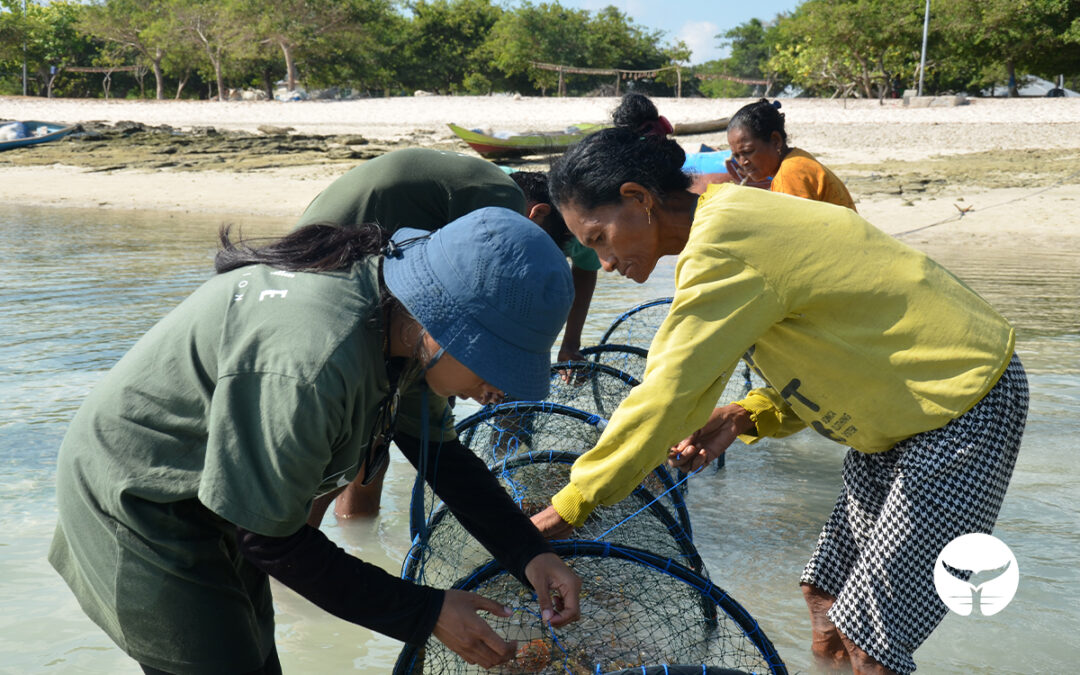In Rote, seaweed farming has become a major source of income for local coastal communities. Over the last two decades, individuals have gradually transitioned away from palm and coconut processing to seaweed aquaculture. Unfortunately, seaweed farmers persistently face a range of challenges, especially income instability due to stark fluctuations in selling price.
Despite using orthodox farming practices, such as longlines, as seen in other parts of Indonesia, seaweed in Rote tends to compete poorly in terms of harvest yield and quality. The exposed and productive nature of Rote’s coasts and waters, coupled with sub-optimal farming practices, makes seaweed prone to breakages and seasonal parasite infestations, and their longlines prone to damage. Over time, these factors create an abysmal cycle of consistently poor seaweed and seedling production.
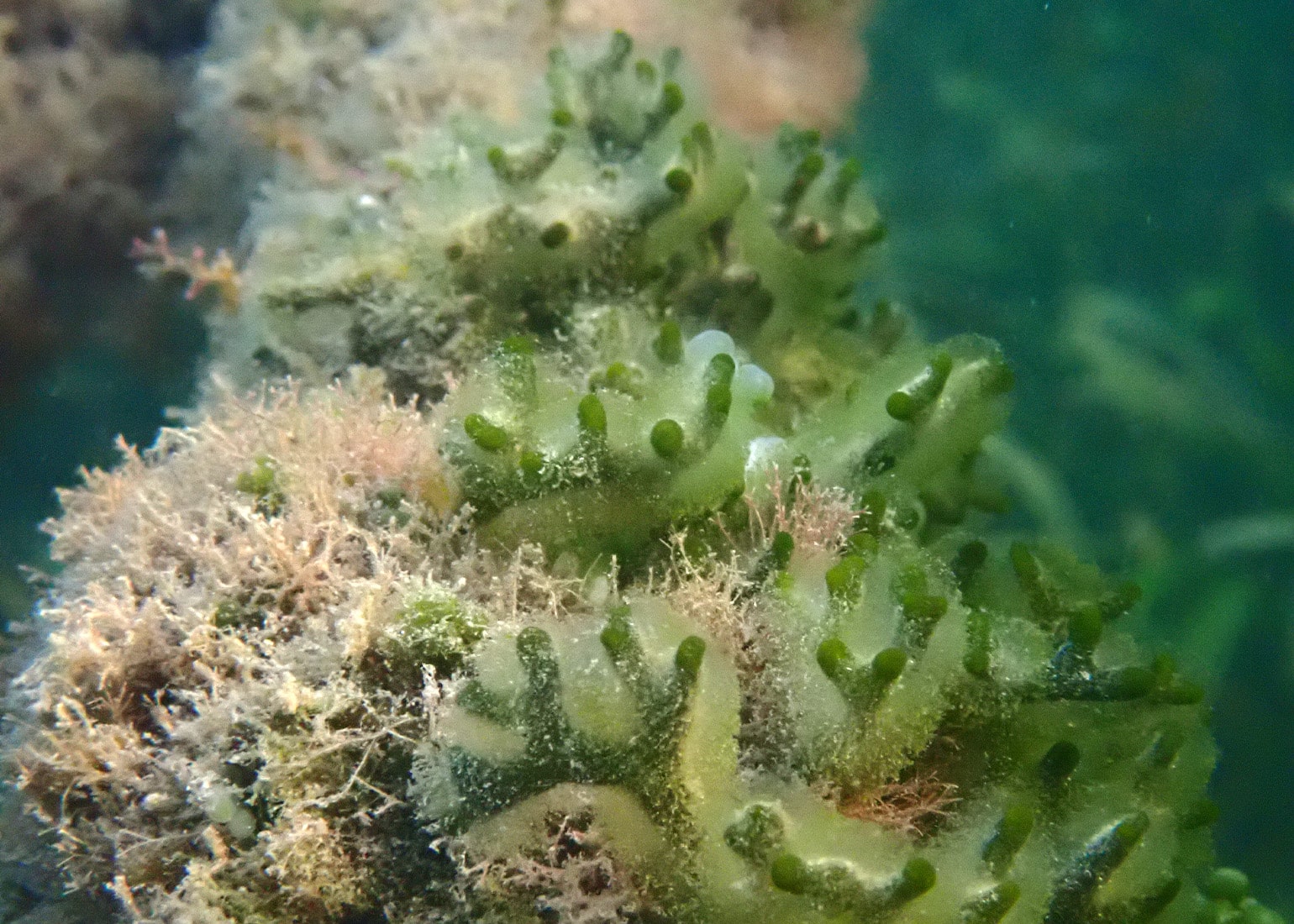
Poor quality seaweed infested with parasites. Photo by Made Abiyoga.
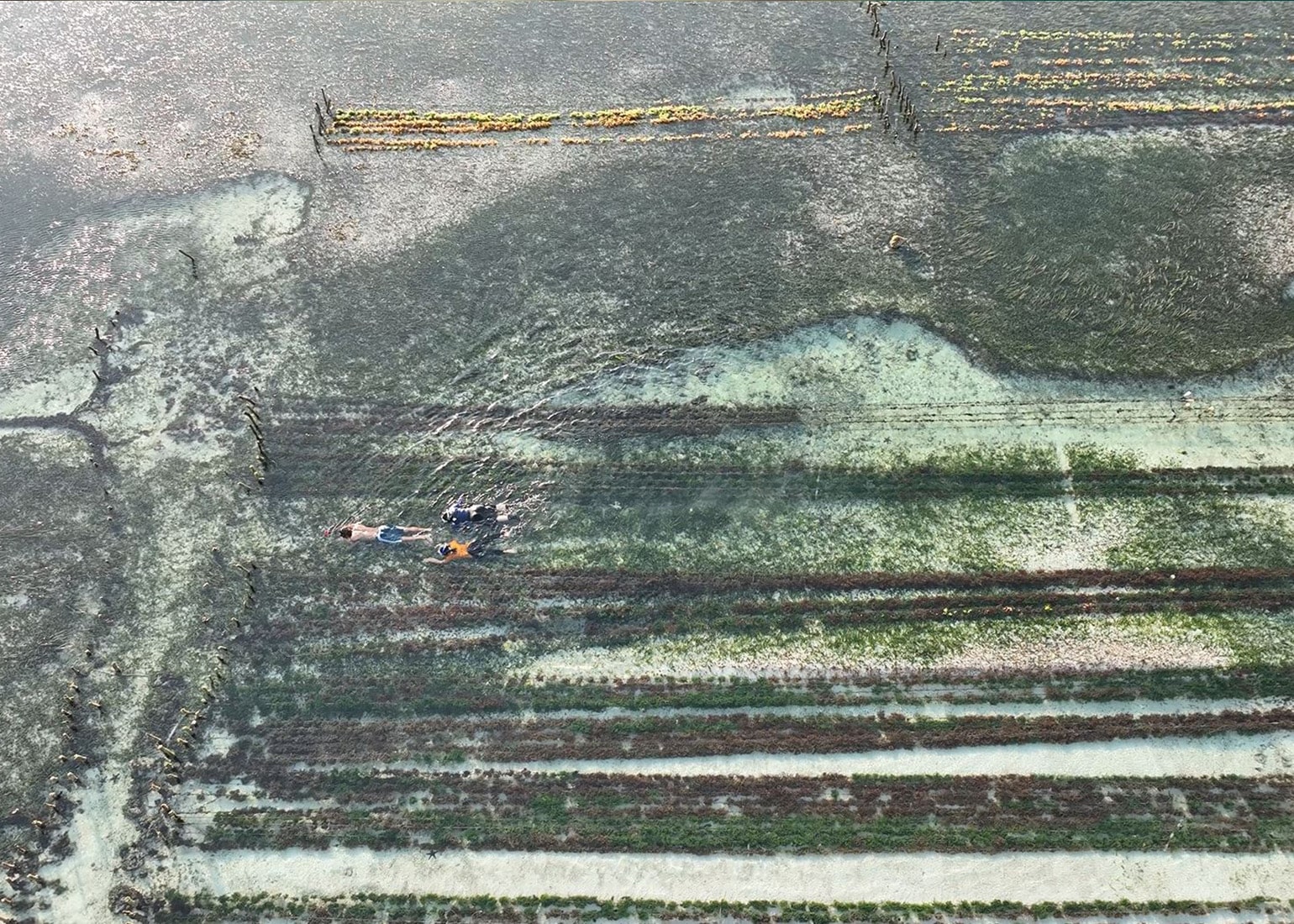
Aerial view of longlines used for seaweed farming. Photo by Nesha Ichida.
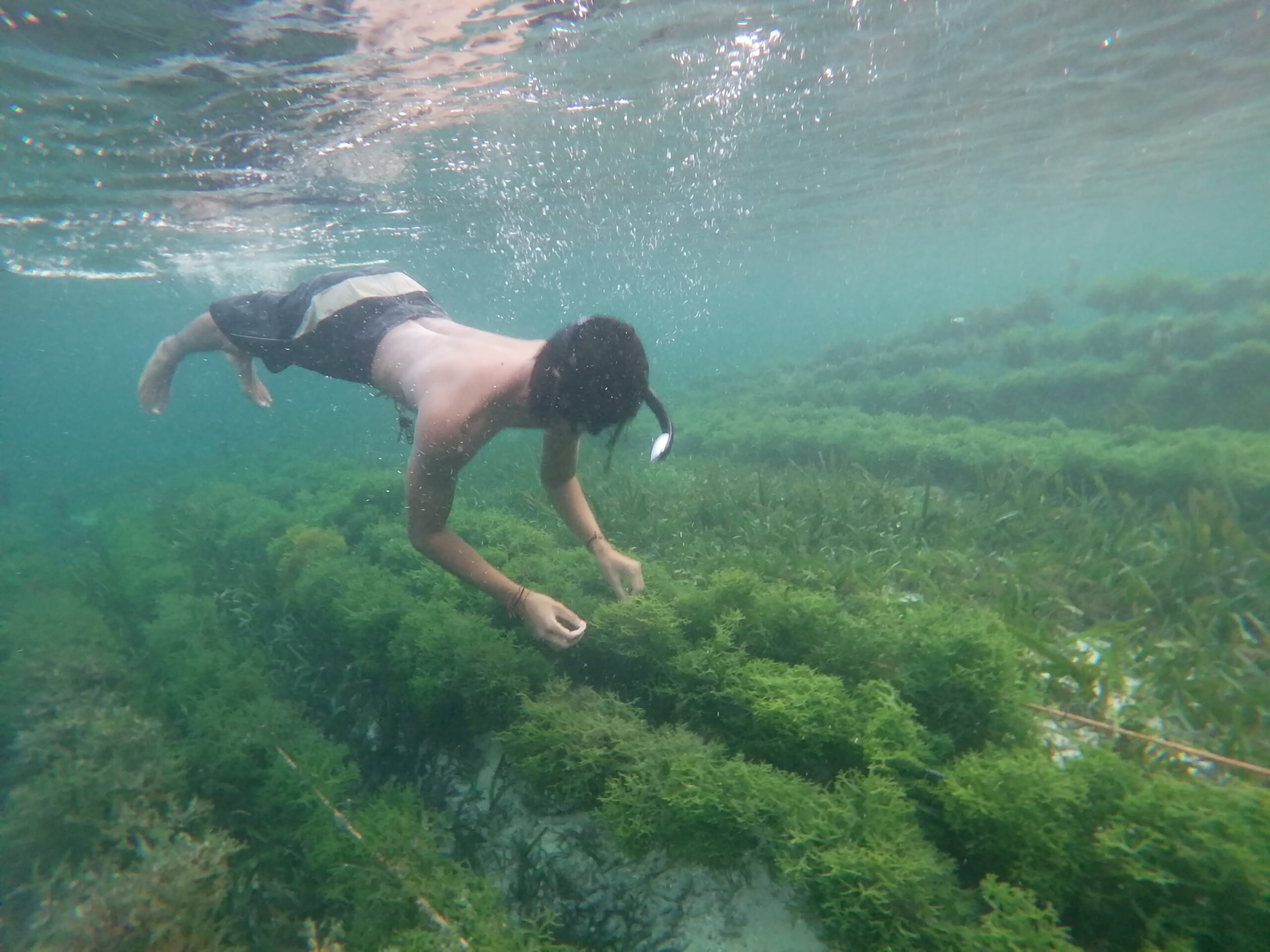
Underwater view of longlines used for seaweed farming. Photo by Nesha Ichida.
The scientists and professors at the Faculty of Fisheries and Marine Science at Universitas Kristen Artha Wacana (UKAW), a local university in Kupang, developed an innovative seaweed farming technique, called the ‘Anaconda’, to combat these exact issues faced by seaweed farmers operating in remote and exposed regions like Rote. The Anaconda’s structure consists of a mesh tunnel with rib-like rings made of PVC or bamboo for support. The seedlings are placed inside the mesh, as opposed to being tied as seen in the commonly used longline method. They remain free-floating throughout their growth period.
This concept was developed to minimize loss and breakages of the seaweed in the case of strong waves, currents, or surges. This method also incorporates the use of a weighted mooring system instead of the typical wooden stakes used to anchor seaweed longlines. The team at UNKRIS hopes that the Anaconda could become a widely adopted tool that will elevate the sustainability of seaweed farming and produce higher quality yield and seedlings.
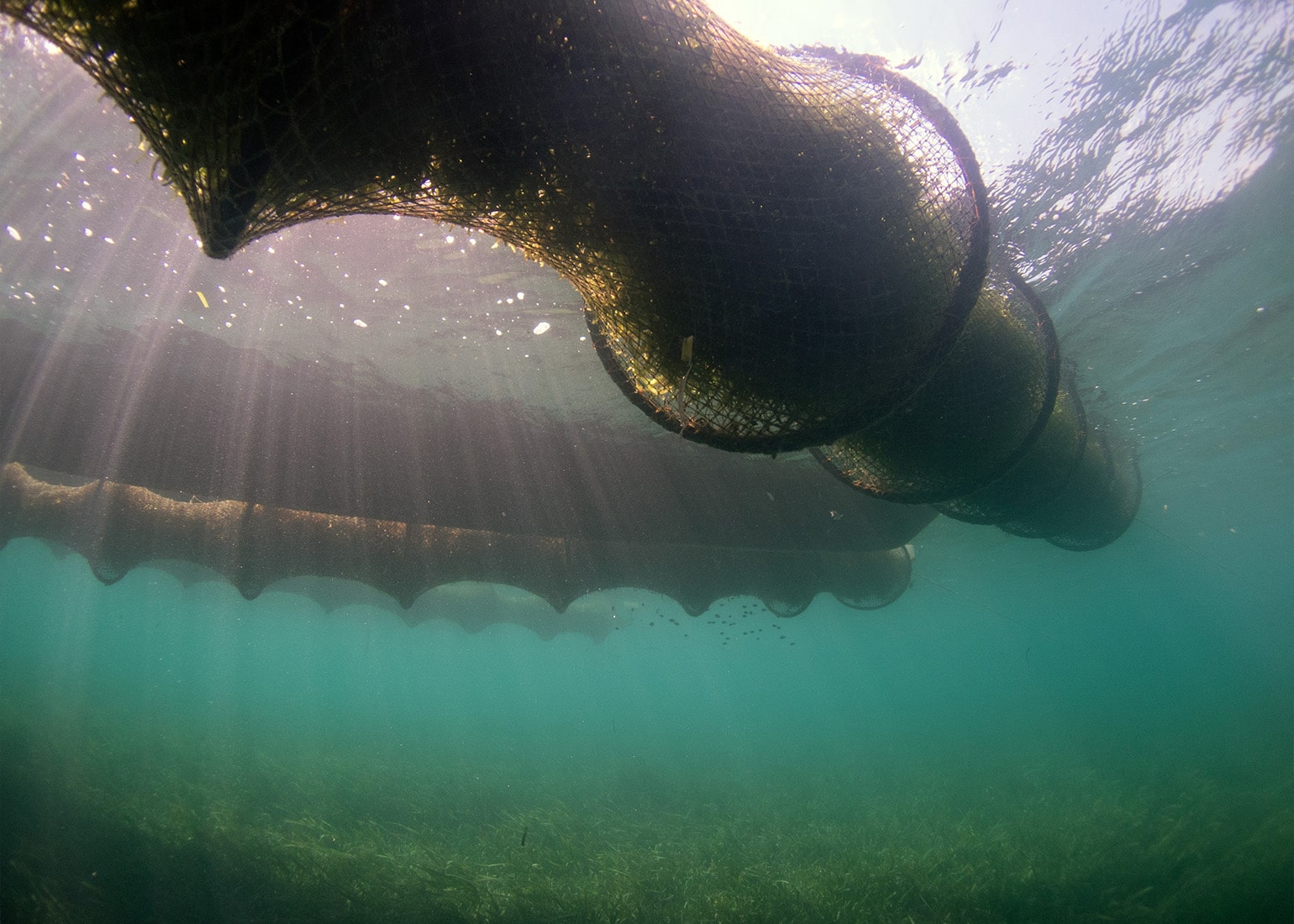
Underwater view of the Anaconda setup. Photo by Made Abiyoga.
To date, UKAW has trialed the Anaconda at two locations in East Nusa Tenggara — Kera Island and Savu Island. The latter trial was conducted over the course of seven months and demonstrated promising results, eventually leading to a public dissemination of the Anaconda as a sustainable, small-scale seaweed farming method. At both sites, the Anaconda emerged as a superior method as compared to the traditional longlines for producing higher quality seedlings.
Thrive Conservation has partnered with UKAW since May 2024 to trial the Anaconda in Rote (the third location), specifically at two sites recommended by our team — East Landu and Landu Lohaen, based on the results of our socioeconomic surveys conducted in late 2023.
In May 2024, Professor Imanuel J. Emola from UKAW organized an initiation workshop for the local community in Landu, where seaweed farmers were given an extensive presentation and hands-on guidance on the concept, assembly process, maintenance, and harvesting protocols for the Anaconda. The multi-day workshop in each village culminated in the deployment of ten Anacondas and two longlines that will be managed by the community groups alongside our team.
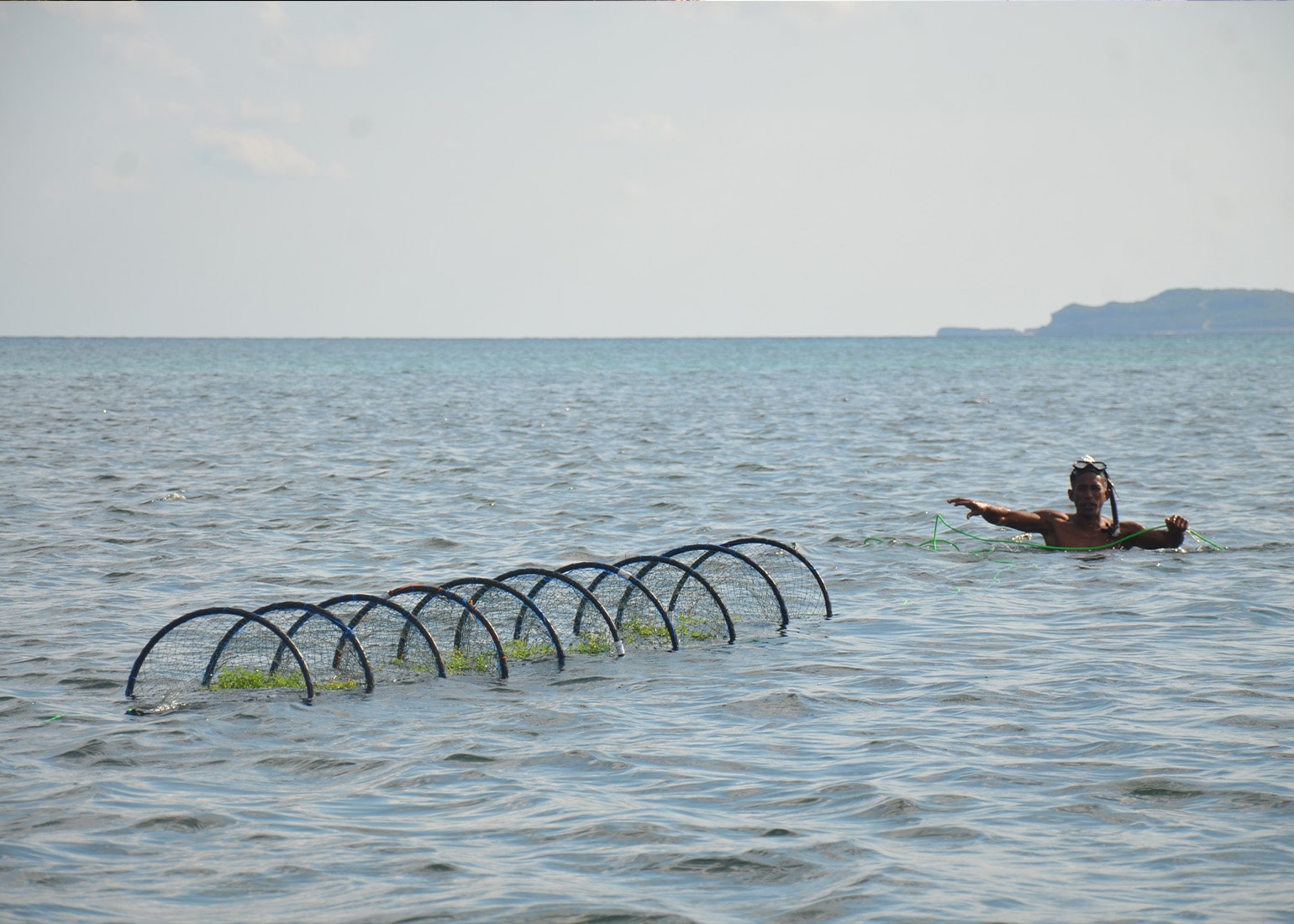
Community in Landu deploying the Anaconda. Photos by Muntaz Taufik Hidayat.
As part of their internships with Thrive Conservation, Febry Tafuy and Dedy Dimu are based in Landu to assist with community monitoring and growth analyses of the seaweed from the two farming methods at both sites. Weekly measurements are taken and over time, the data will help inform recommendations and best practices for seaweed farming communities as well as support further research and development of the Anaconda by scientists.
“Although this is the first time that the Anaconda has been implemented in Rote, it has been great to see the interest and drive of the local community in building, launching, maintaining, and harvesting seaweed from the Anacondas. My hope is that the Anaconda can provide high quality seaweed and seedlings that will serve to strengthen the seaweed farmer’s local economy, especially in Landu Lohaen.”
– Febry Tafuy
“I hope that the introduction of the Anaconda can strengthen the bonds within the community through greater ownership and accountability.”
– Dedy Dimu
In late June, four weeks after the initial deployments, our team visited Landu Lohaen to find out from the community about progress thus far and future plans. The conversation resulted in a collective agreement to launch ten more Anacondas, with the use of seedlings from their own harvests, as opposed to seedlings from mainland Rote which the initial Anacondas were equipped with.
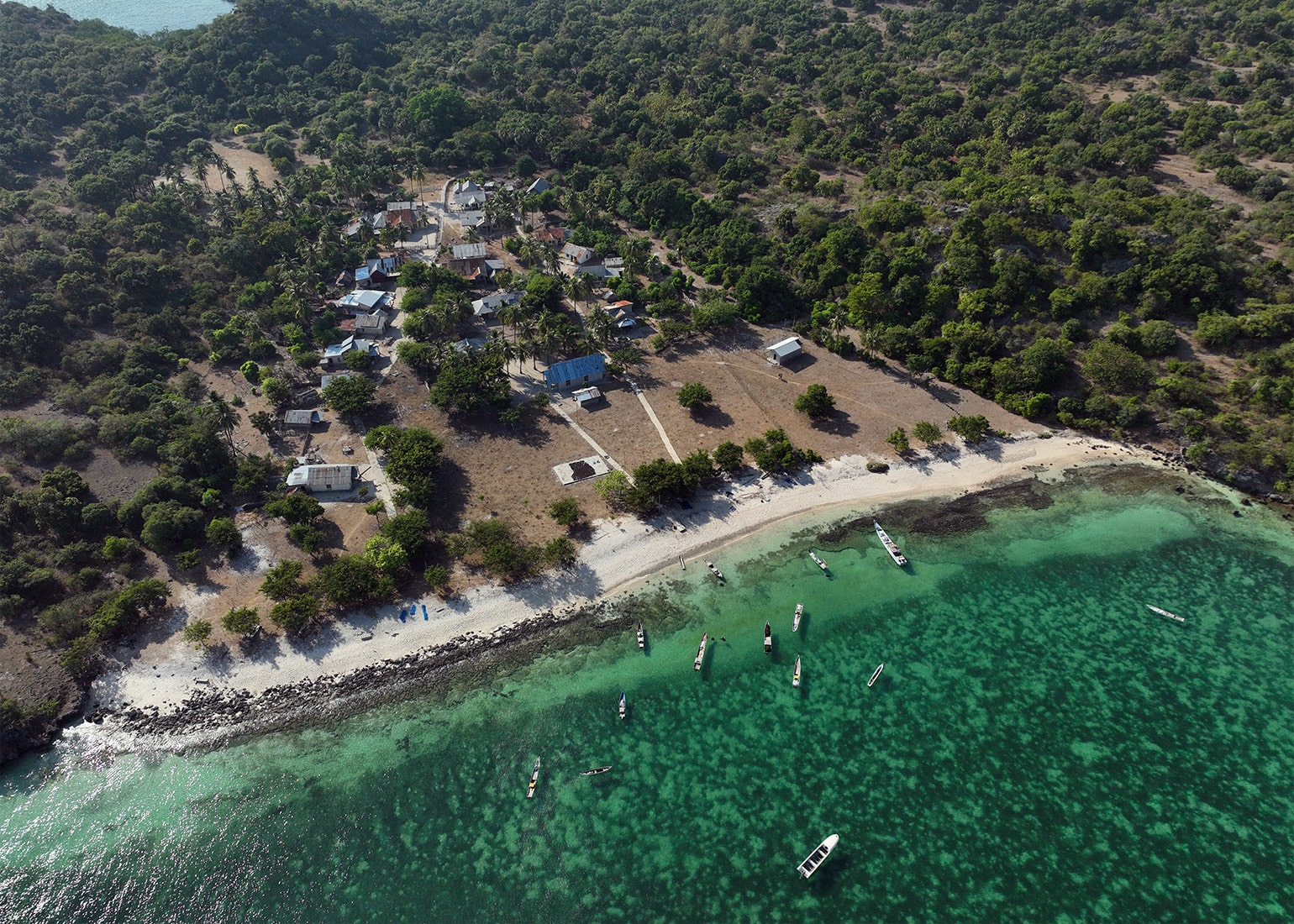
Aerial view over Landu Lohaen. Photo by Made Abiyoga.
Statistics
East Landu
5 initial Anacondas launched – seedlings from Mbueain
Landu Lohaen
5 initial Anacondas launched – seedlings from Mbueain
2 initial longlines launched – seedlings from Mbueain
10 more Anacondas launched – seedlings from Landu Lohaen
4 more longlines launched – seedlings from Landu Lohaen
It has now been five weeks since the launch of the initial Anacondas and longlines, and various growth patterns have started to emerge. Harvest will commence after a 45-day growth period, which is the approximate duration required for the desired carrageenan content to be reached.
Once the seaweed has been harvested and dried, several samples will be sent to Kupang to be analyzed at the PT Rote Karaginan Nusantara testing facility. Our hope is that the seaweed cultured using the Anaconda will be of exceptional quality, and will be large-sized, contain high carrageenan content, and feature a clean final product, so that the local seaweed farmers can indeed benefit from comparably higher selling prices and increases in overall income.
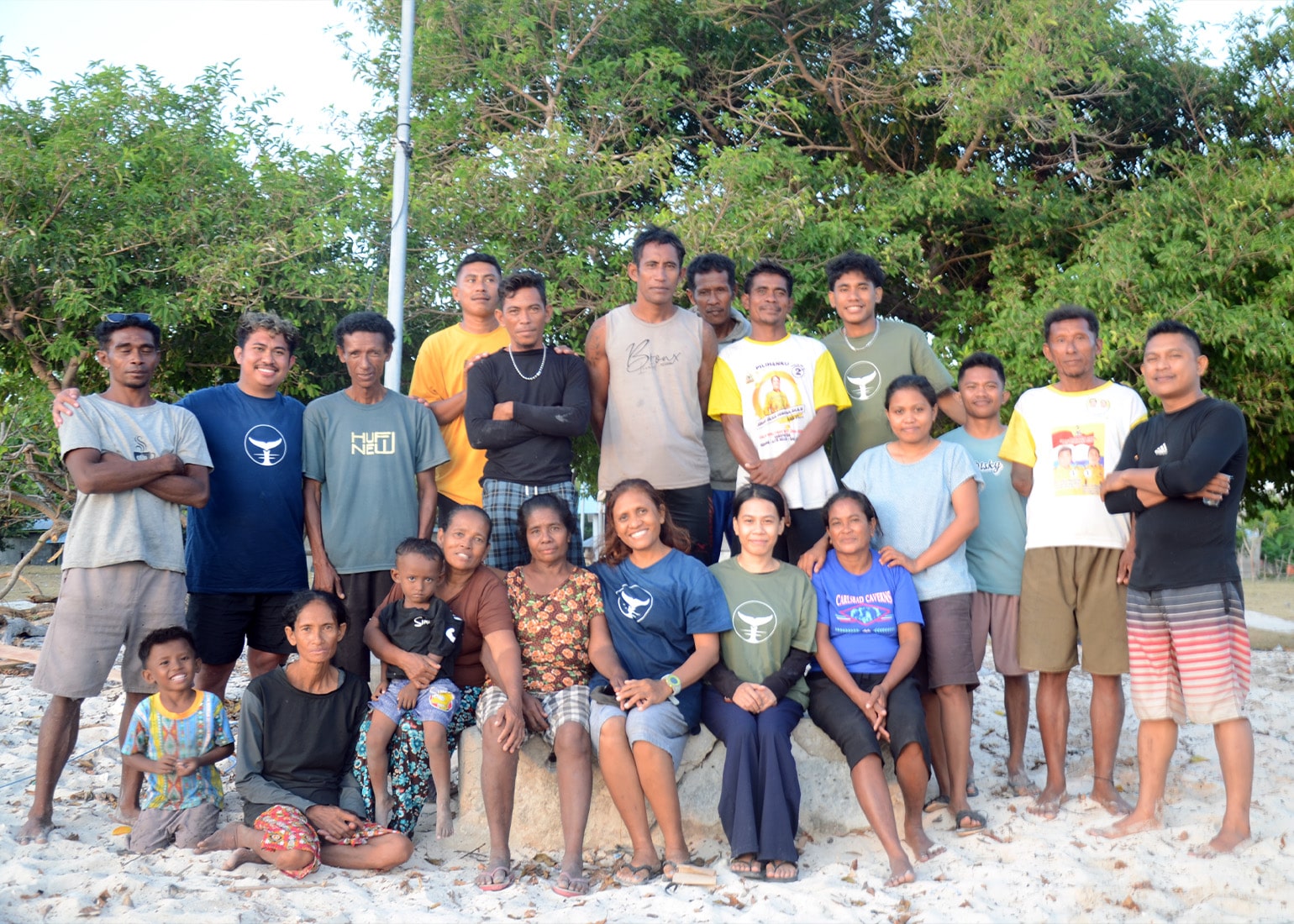
Our team with the community in Landu. Photo by Muntaz Taufik Hidayat.

